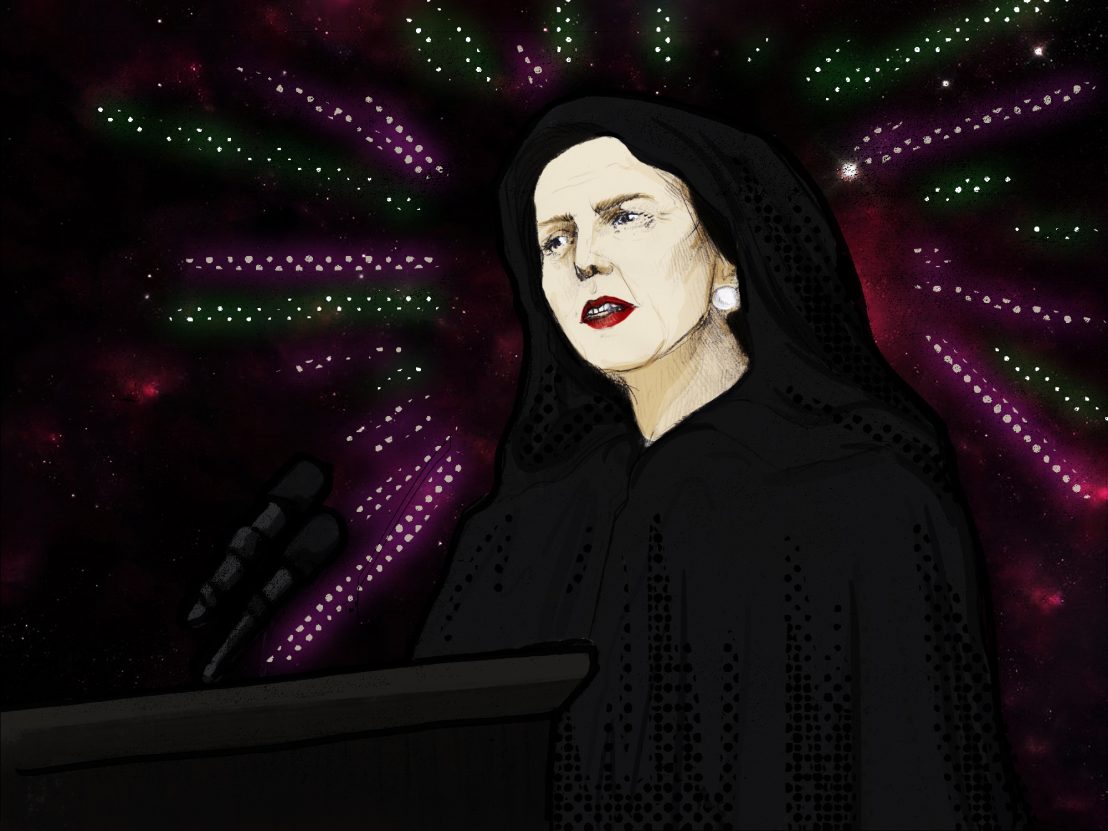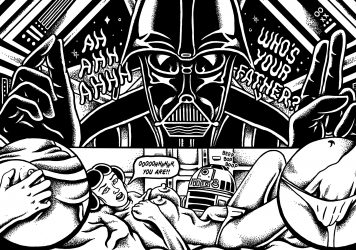
Ask older Star Wars fans about ‘Star Wars Day’ and they’ll probably tell you it ought to be celebrated on 25 May – the date when George Lucas’ swashbuckling space opera opened in US theatres back in 1977.
But the origins of Star Wars Day as we know it, celebrated on 4 May across the internet and in various offline capacities, can be traced back, surprisingly enough, to the 1979 UK general election. Margaret Thatcher’s ousting of the incumbent Labour Prime Minister James Callaghan was commemorated by her party taking out a half-page ad in the London Evening News that read: “May the Fourth Be With You, Maggie. Congratulations.” That the Conservatives saw fit to repurpose the now iconic phrase for this momentous political victory shows just how far reaching Star Wars’ cultural impact was at the time.
Star Wars Day is a time for fans to show their appreciation of the series, either by attending local events, hosting or participating in film screenings, or more simply sharing memes to mark the occasion. The uniqueness of this particular phenomenon stems from the fact it was devised by fans and not the production company, Lucasfilm. In recent years, Star Wars Day has become a point of interest for a multitude of corporations to cash in on, by incorporating certain characters or quotes into their branding, in many cases through ingenious methods.
The first notable real-world Star Wars Day event occurred on 4 May, 2011, in my home city of Toronto, Ontario, at the now defunct Toronto Underground Cinema. It featured a plethora of fan films, mashups and parodies projected on the big screen, not to mention 35mm trailers of films from the original trilogy. Attendees were also able to participate in a costume contest judged by local celebrities, win prizes in a trivia game show and take photos with members of the 501st Legion of Stormtroopers, the fan organisation who dress up like armoured forces of the Galactic Empire.
Not having permission to show the films themselves from the rights holder, the event instead came to represent a celebration of the fandom itself and the various formats of expression through which it could be presented. Soon other Star Wars Day events began springing up in cities around the world, and in 2012 another pun-centric unofficial holiday, ‘Revenge of the Fifth’, was launched on 5 May, styled after the third film in the prequel trilogy.
Following Lucasfilm’s acquisition by the Walt Disney Company in 2012, many feared that such fan-centric events would be suppressed, but the exact opposite happened, with the studio utilising the vast resources at its disposal to capitalise on the growing phenomenon. Star Wars Day is now a top priority for Lucasfilm. The first official celebration post acquisition took place in 2013 at various Disney theme parks, where costumed characters mingled with fans and fireworks displays were set to John Williams’ classic themes.
Over the last five years Star Wars Day has undergone a significant transformation. More than anything, Disney is careful to ensure the focus of the event remains on the fans and doesn’t exert too much influence, as their interference with the relationship many share with the property risks oversaturation. At a time when audiences are accustomed to seeing a new Star Wars film every year, maintaining this balance is of paramount importance.
Yet the manner in which Disney has seemingly co-opted Star Wars Day is a point of contention for many. The number of attempts by other competing studios and their marketing arms to replicate Star Wars Day’s success, namely 20th Century Fox with ‘Alien Day’ on 26 April, shows how willing studios have become to exploit fan culture for their own commercial gain. Conversely, the impact of social media, which affords fans and corporations alike instant access to an audience of millions, has also become a key factor in the development of Star Wars Day.
The event gained traction on online communities and forums during the mid-2000s, with the popularity of ‘Luke Skywalker Day’ paving the way for fan events that would take place just a few years later. Presently, the most common form of online participation is the use of hashtags and images to project awareness and support of the annual celebration. On Twitter, custom emojis of a cartoon Stormtrooper accompany #StarWarsDay and #MayThe4thBeWithYou – a simple but incredibly powerful gesture that effectively generates free advertising while simultaneously allowing people to express their fandom.
Since the franchise was re-launched with The Force Awakens, Rogue One and The Last Jedi, Star Wars Day has become integral to sustaining the popularity of the brand in between releases. The corporate influence of Disney that now permeates the celebration cannot be ignored or denied, and there’s no doubt that this year’s event will be focused on the upcoming Solo: A Star Wars Story, the marketing of which has been underwhelming to say the least.
Still, there is something to be said for the multitude of ways one can embrace the series, just as fans did in the early days of the event. This year, it’s worth remembering that while it may be seem ludicrous to champion such a ubiquitous franchise, Star Wars Day is a global celebration with humble beginnings.
Published 4 May 2018

Weird and wonderful artwork for George Lucas’ original saga.

George Lucas’ space saga was instrumental in kick-starting the X-rated spoof industry.

By Tom Bond
A life-long Star Wars fan sings the praises of the much-maligned third episode in George Lucas’ epic space saga.